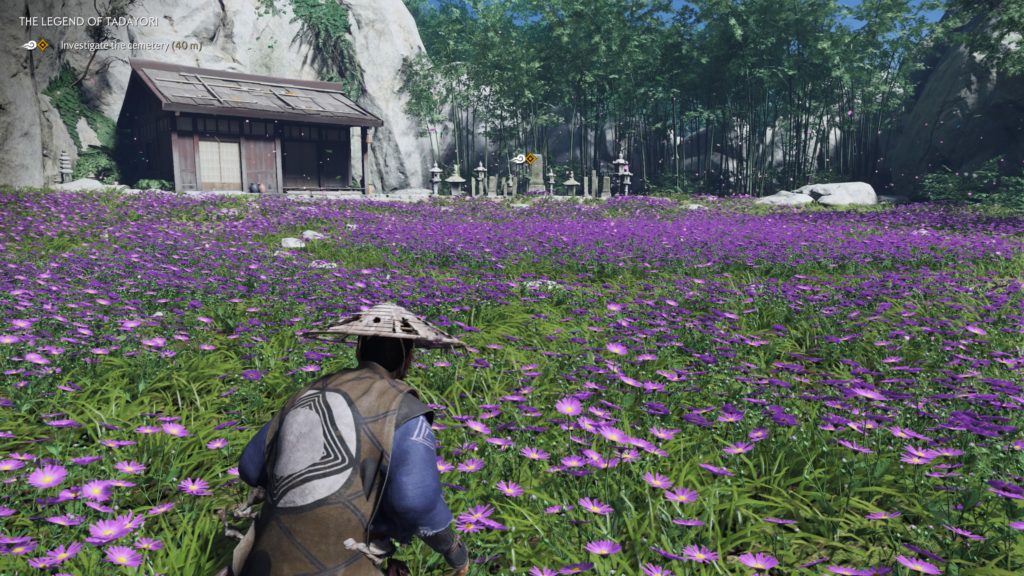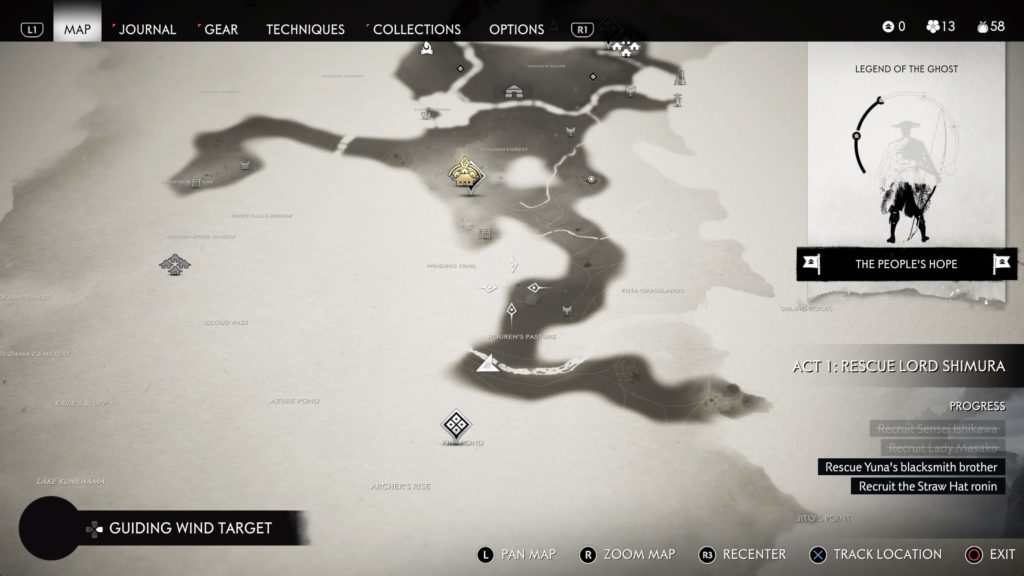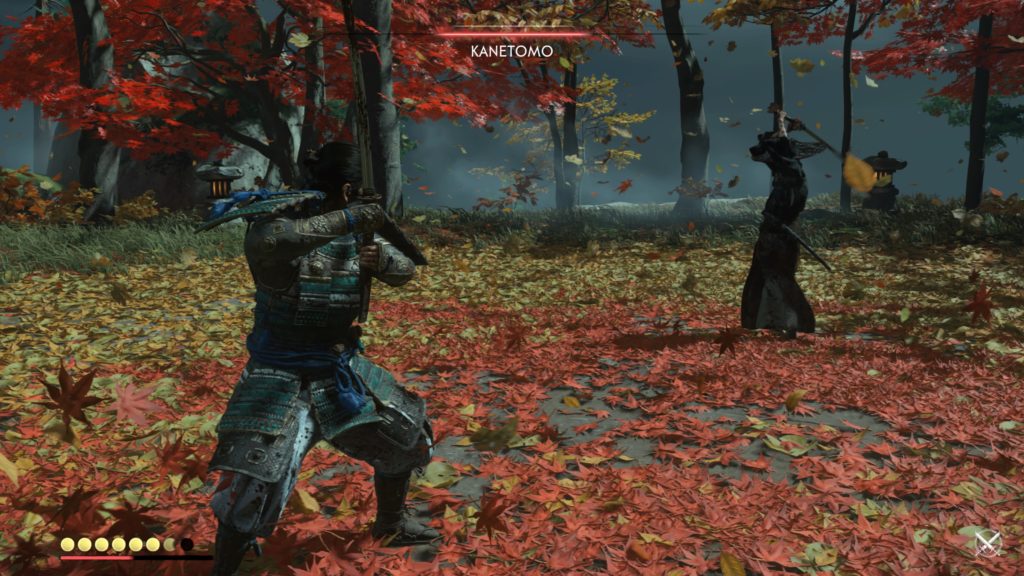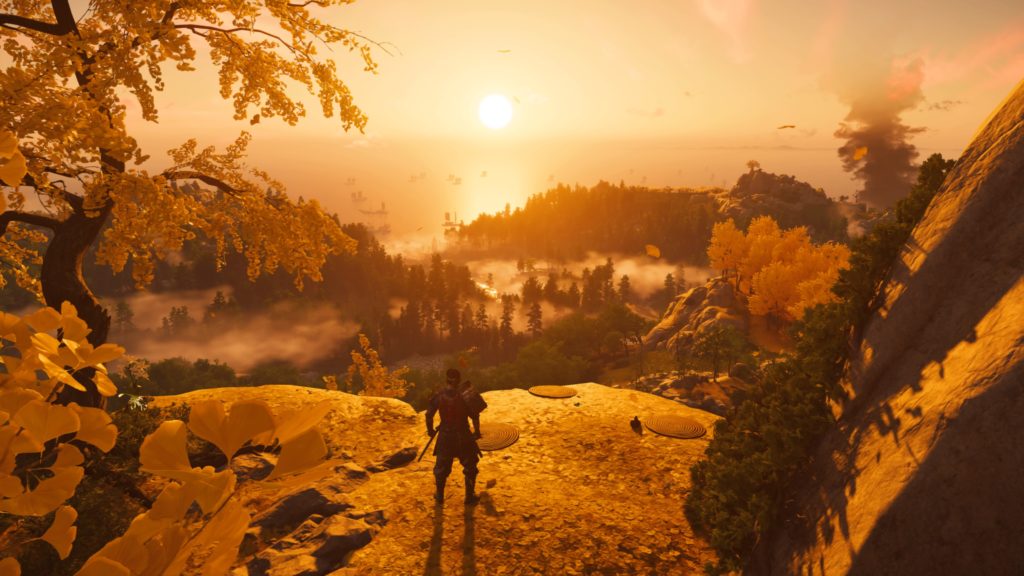- Genre: Action/Adventure
- Platform: PS4
There’s no doubt that this is the feudal Japan Assassin’s Creed that everyone has been asking for, but I’m not saying that as a bad thing. This takes a lot of what’s made the past few AC games great with some clever changes to the overall structure. It also features combat that clicked for me way more than it ever did in those titles. Overall I was left playing a game that surprised me in how much I enjoyed it, despite its familiarity.

If there’s two main things that I think separate this one from AC, it’s that there’s generally less to do, and that combat is a bit more nuanced. The first one provides a greater focus on the overall meta game, steering you to do fewer activities, but ones that generally feel like they have a great impact on your character progression. The second provides changes to the moment to moment action as you go through. Combined with a high level of polish, this gives us what feels like the next step in this type of gameplay, and hopefully a bar for Ubisoft to hit with Valhalla.

Taking a look at the map, you get that immediate feeling of familiarity. There’s fog of war in areas you haven’t been to. There’s icons for quests and towns and activities all over that pop up. However, they all serve some sort of purpose. Rather than climbing towers to lift fog of war in an area, you have to invade Mongol camps and take out their leaders. Side quest aren’t just fun little story points – they also give rare resources to upgrade existing gear, and in some cases completely new gear. In many cases, you won’t even know what the icons on the map are for until you get up close to them.
However, there’s a lot of in-world hints as well to help steer your exploration. If you want to focus on gaining some health, you’ve got to keep an eye out for steam columns where you can use hotsprings. If you need to boost your resolve to have access to more special moves, you’ll be on the look out for banners marking the location of bamboo strikes. If you want to get some accessory charms, you’ll want to keep an eye out for small yellow-leaved trees to follow foxes around.
All of these little things do a lot to make that exploration focus just work. There’s always some visual clue to pull your attention and there’s always some tangible reward at the end of it. None of the things feel like a waste or a grind. You do a thing, you get an immediate reward, and you immediately know what it does. It all just feels really natural in practice. Where AC Origins and Odyssey started to shed some of their collection-heavy past, this one feels like it took the next step that Ubisoft was perhaps hesitant to do.

Combat has a similar thing where it feels like a logical next step in the process. Stealth is still in play, and is still super useful. Parries and dodging are there like in AC and are still your main means of avoiding damage. Combat still kind of breaks down when there’s large groups, largely because there’s only so many directions you can focus on at once. However, where things really clicked for me were in the duels.
Duels are effectively your boss fights for this game. Starting one off always has a great intro cutscene to establish the fight, then your camera comes in super tight and you’re off. The actual combat is still the same, but the one-on-one focus allows for a lot tighter overall action. Where dodging without care for timing will generally work well against trash mobs, mistiming your dodges here could put you in a spot where the opponent can immediately hit you with a second attack before you can respond. On the other hand, timing your dodge perfectly puts you in slow motion with the ability to quickly attack. The same thing also stands with parries. Time it well, and instead of just a simple parry you will break your opponent’s defense and have them lined up for a critical strike. It’s also hugely beneficial that parryable and dodgeable attacks are different and have obviously different visual tells. It puts the combat into a place where there’s no guessing and it’s all about timing and skill, then solid execution of attacks when you’ve put yourself in a place to go on the offense.
There’s also something to be said of the fact that there’s very distinctly strong stances in this game, and in that regard it feels like it’s pulling a lot from the Yakuza series. As a player you have 4 main stances, each good against specific enemy types – swords, shields, spears, and brutes. While you can definitely fight any enemy with any stance, the skill of identifying and fighting with the right stance is hugely beneficial to clearing out enemies as quick as possible, while also minimizing the damage that you end up taking. This ends up being the real saving grace for group combat, as using the stance switching can allow you to quickly clear up the easier targets, leaving you to focus on one or two of the more problematic ones.
It also dawns on me that I didn’t take any screenshots of me using either of the bows. That’s kind of a shame because they’re honestly very good. You have a short bow (quick draw, lower damage) and a long bow (slow draw, large damage, can pierce metal) that are both very effective at their role, especially in stealth situations when taking out sentry units. They’ve got a pretty solid impact feel to them, they’re generally easy to fire, but with gravity effecting the arrows they aren’t trivially easy. There’s also a bit of aim assist typical of gamepad, but it’s not overbearing. It ends up falling in a place where there’s enough skill involved to make using it feel fair, but enough assists in place to make it still feel natural with gamepad aiming.

I certainly won’t sit here and claim that this is generally an original title, but it didn’t necessarily have to be. It takes the framework established by the recent Assassin’s Creed titles, and iterates enough on it to feel like its own thing. What it does do is give me hope that we see it push Ubisoft to take that next step with Valhalla or Sony with the next God of War, because as a genre these open world action games just work very well. This one added a really well developed feudal Japan setting and interesting story to the overall game framework, and it hit really well as an end-of-generation title. It also served as a really interesting change in direction for Sucker Punch after wrapping up some of their Infamous story line early on in the generation. Now, admittedly I wouldn’t mind seeing them go back to Sly Cooper after this, but they did a hell of a job pushing the open world action game in a direction of continued improvement here.

One Reply to “Game Ramblings #118 – Ghost of Tsushima”
Comments are closed.